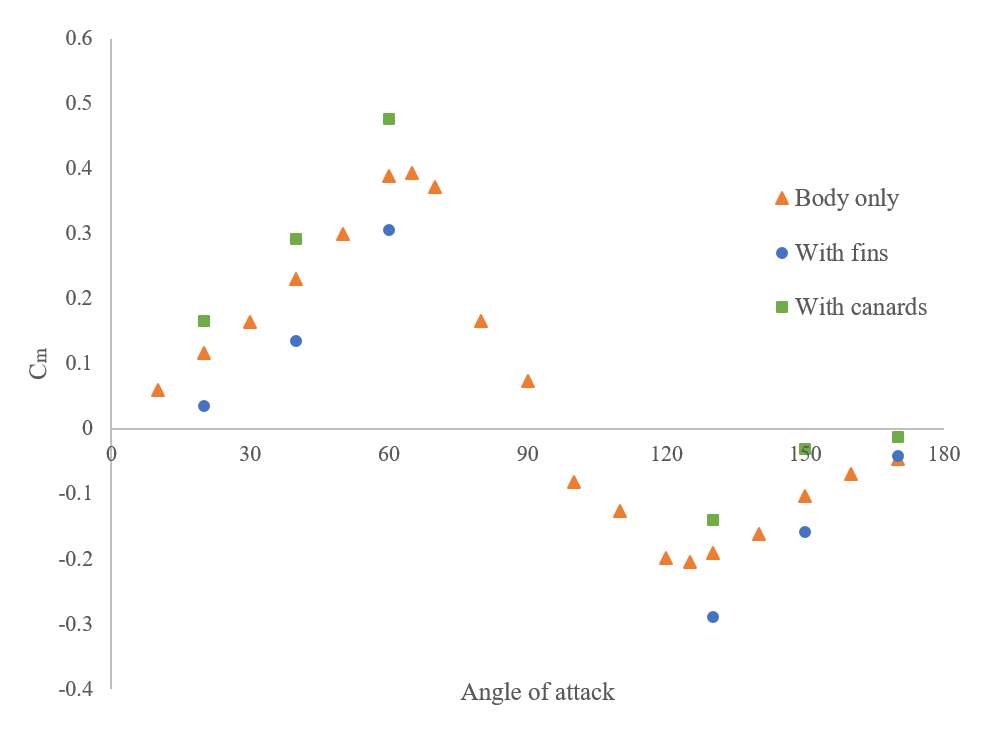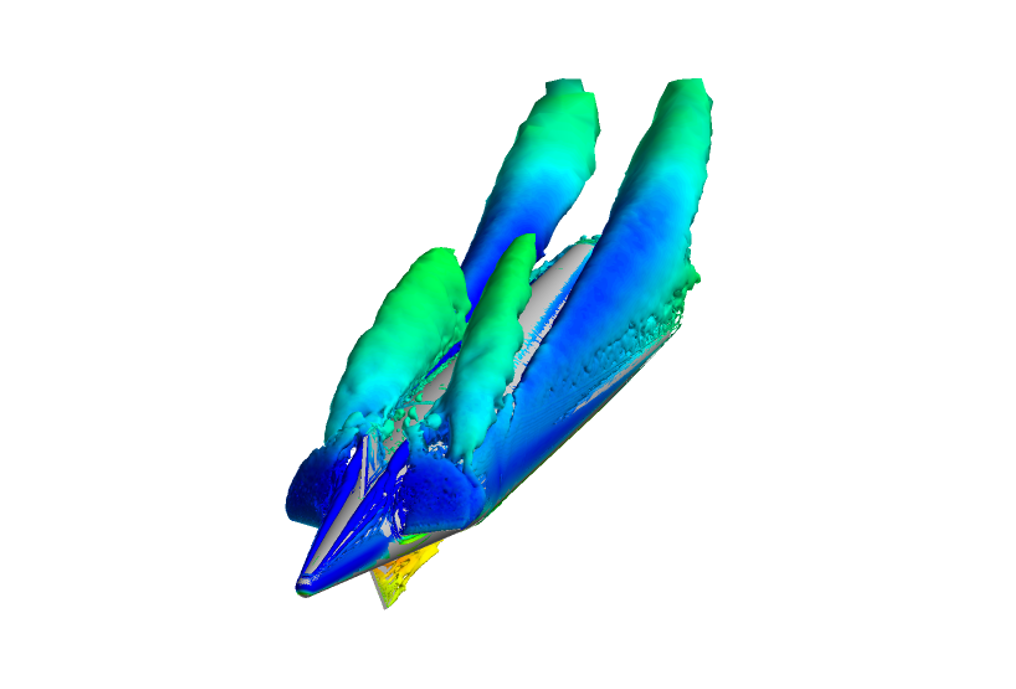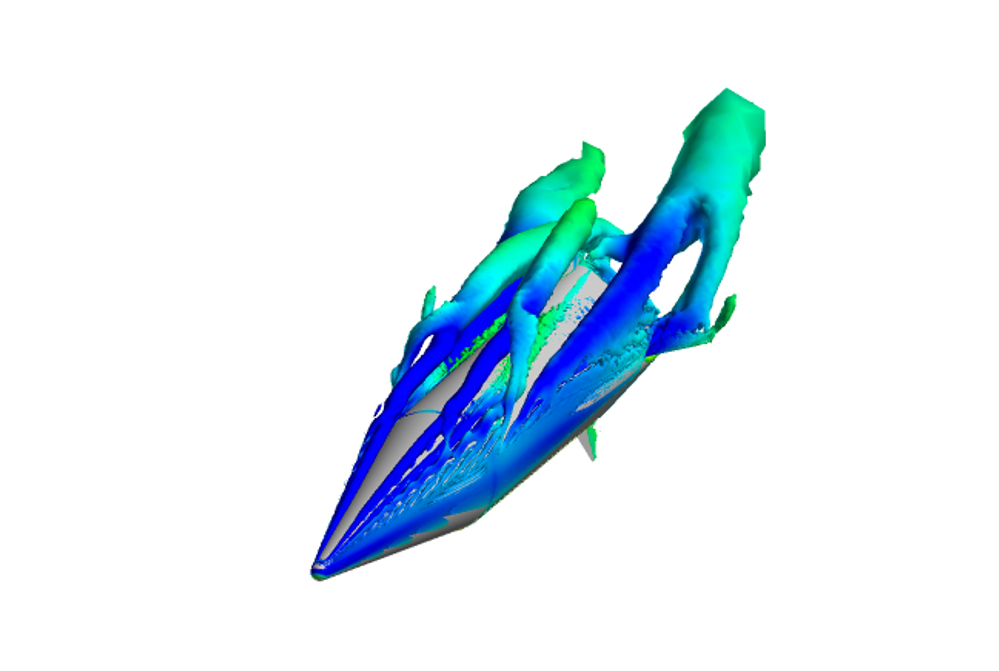Computational Study on Aerodynamic Characteristics of Slender Body Configurations
JAXA Supercomputer System Annual Report April 2017-March 2018
Report Number: R17EACA12
Subject Category: JSS2 Inter-University Research
- Responsible Representative: Keiichi Kitamura, Gaduate School of Engineering, Yokohama National University
- Contact Information: Takuya Aogaki aogaki-takuya-rf@ynu.jp
- Members: Keiichi Kitamura, Takuya Aogaki, Yuya Takagi
Abstract
We conducted numerical analysis on a slender body configuration which mimics a reusable rocket. In this study, we acquired detailed flowfields which have not been obtained from previous experiments and related them with aerodynamic characteristics. We also investigated and clarified effects of aerodynamic devices such as fins and canards on the aerodynamic characteristics.
Reference URL
Please refer to ‘YNU Aerodynamics Lab.‘.
Reasons for using JSS2
From earlier studies, it is known that our calculations require at least 10 million cells. In order to reduce the computational time of such large-scale calculations significantly, we used JSS2.
Achievements of the Year
We conducted numerical simulations on a slender body configuration which mimicked a reusable rocket. From results, we found that pitching moment coefficients changed by installing canards or fins in the vehicle (Fig.1). In addition, from visualization results, it was revealed that flowfields on the leeward side of the vehicle are affected by such aerodynamic devices (Figs.2 and 3). As a result, we clarified the relationship between aerodynamic characteristics and flowfields.
Publications
■ Peer-reviewed papers
1)Aogaki T., Kitamura K., and Nonaka S., “Computational Study on Finned Reusable Rocket Aerodynamics during Turnover”, Transactions of the Japan Society for Aeronautical and Space Sciences. (Accept)
■ Presentations
1)Aogaki T., Kitamura K., and Nonaka S., “Computational Study on Finned Reusable Rocket Aerodynamics during Turnover”, 31st International Symposium on Space Technology and Science, 2017-o-3-04, Matsuyama, June 2017.
Usage of JSS2
Computational Information
- Process Parallelization Methods: MPI
- Thread Parallelization Methods: N/A
- Number of Processes: 128 – 1024
- Elapsed Time per Case: 30.00 hours
Resources Used
Fraction of Usage in Total Resources*1(%): 0.20
Details
Please refer to System Configuration of JSS2 for the system configuration and major specifications of JSS2.
| System Name | Amount of Core Time(core x hours) | Fraction of Usage*2(%) |
|---|---|---|
| SORA-MA | 1,413,528.60 | 0.19 |
| SORA-PP | 9,364.05 | 0.12 |
| SORA-LM | 15,468.60 | 7.97 |
| SORA-TPP | 0.00 | 0.00 |
| File System Name | Storage Assigned(GiB) | Fraction of Usage*2(%) |
|---|---|---|
| /home | 007.15 | 0.00 |
| /data | 071.53 | 0.00 |
| /ltmp | 1,464.84 | 0.11 |
| Archiver Name | Storage Used(TiB) | Fraction of Usage*2(%) |
|---|---|---|
| J-SPACE | 0.62 | 0.03 |
*1: Fraction of Usage in Total Resources: Weighted average of three resource types (Computing, File System, and Archiver).
*2: Fraction of Usage:Percentage of usage relative to each resource used in one year.
JAXA Supercomputer System Annual Report April 2017-March 2018





